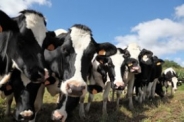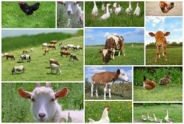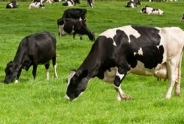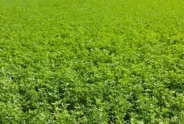Cash Flow Budgeting -- A Valuable Farm Financial Management Practice
John Hanchar, Farm Business Management Specialist
Northwest New York Dairy, Livestock & Field Crops
Last Modified: July 5, 2013
Introduction
Less favorable input, output price relationships, for example, rising feed prices relative to prices received for milk, livestock and other livestock products, will likely challenge farm business owners' abilities to achieve financial objectives over the next several months. Knowing where the business might be financially given less favorable conditions is a valuable first step in meeting the challenge. Budgets estimate future financial condition or performance.
"Farmers who use written calculations or a computer spreadsheet to make a cash flow budget had a much greater ROA (rate of return on assets with appreciation [a profit measure]) than those who did not use these techniques. ... This provides evidence that there are positive returns to detailed financial analyses." (Gloy, Brent A., Eddy L. LaDue, and Kevin Youngblood. 2002. Financial Management Practices of New York Dairy Farms.)
Budgets
For farm business owners, most budgeting work focuses on estimating expected effects on profit, and on projecting the business' ability to meet cash obligations in a timely manner.
Key characteristics of budgets when facing unfavorable input, output price relationships include the following.
- Budgeting helps you see what a future period's financial performance will look like for planning purposes. A budget allows one to project cash flow shortages, plan borrowings, and determine the ability to repay borrowings.
- Budgeting provides the manager with a tool for assessing how well the business is meeting projections, and to identify and correct potential problems.
- Budgets help the farm business owner communicate to others where the business is headed financially.
Examples of budgets include: partial, enterprise, and whole farm budgets for projecting expected effects on profitability and for projecting expected effects on the business' ability to meet cash obligations; and capital budgets associated with investment analysis. Income statements or cash flow statements that report a past period's performance, for example, an income statement for the 2011 calendar year, are not examples of budgets. They report actual past performance, and do not project or estimate future financial performance.
Whole Farm Budgets
A whole farm budget examining profitability summarizes expected income, expenses, and profit. A cash flow budget for projecting the business' ability to meet cash obligations is a summary of the expected cash inflows (cash farm receipts, money borrowed, capital sales, non farm income) and outflows (cash farm expenses, principal payments, capital purchases, withdrawals for family living and other personal withdrawals).
Characteristics include the following.
- Whole farm budgets consider all items including those that are not expected to change from the current, base period to the future period. For example, a cash flow budget projects what the cash flow statement will look like in a future period and reports total values for all inflow and outflow items.
- The most useful, valid projections are obtained when proper procedures are used. LaDue, Schuelke and Mensah-Dartey offer some basic rules to follow to insure useful projections (LaDue, Eddy L., Jacob Schuelke and Virgil Mensah-Dartey. 2000. CASHPRO: A Computer Spreadsheet for Projecting Annual Cash Flows and Pro Forma Income Statements.)
1. Project cash flows from accrual (or accrual adjusted) receipt and expense values.2. Exclude unusual occurrences from the base year data used for projections.
3. Use causal logic in estimating each receipt and expense item.
4. Be sure to adjust for inflation.
5. Livestock farms that grow forages or concentrates should carefully assess their forage and, or concentrate balance whenever significant changes are expected in the size or composition of the animal herd or cropping program.
- Conducting sensitivity analysis and seeking critical review of the projections enhance the usefulness and validity of projections.
The CASHPRO electronic spreadsheet with instructions is available at http://agfinancedyson.cornell.edu/tools.html. Monthly, whole farm, cash flow budgeting is also an option. Again, see http://agfinancedyson.cornell.edu/tools.html for a monthly cash flow budgeting tool.
Upcoming Events
2026 Corn Congress
January 14, 2026
Henrietta, NY
Participant Registration for the 2026 Corn Congress NOW OPEN!
NOW OFFERING 1.5 DEC Recertification CREDITS
2026 Forage Congress
January 28, 2026
Nunda, NY
More info to come
2026 Soybean & Small Grains Congress
February 11, 2026
Henrietta, NY
Announcements
The NWNY Team is Hiring!
The NWNY Dairy, Livestock and Field Crops Team is currently looking for an Area Dairy Management Specialist as well as a Small Farms and Livestock Specialist:The full position descriptions and instructions on how to apply are available here:
Area Dairy Management Specialist: https://academicjobsonline.org/ajo/jobs/31178
Small Farms and Livestock Specialist: https://academicjobsonline.org/ajo/jobs/30979
Follow us on Instagram
See photos and reels of our most recent events and programs!Join us on Facebook!
Follow us on Facebook to get up to date posts about events, workshops and everything NWNY!Add us on LinkedIn!
Connect with us on LinkedIn to get more information about upcoming workshops and programs!





